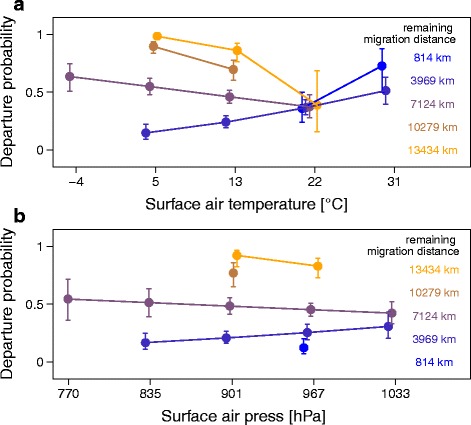Fig. 2.

Model predictions on the effect of surface air temperature and of surface air pressure both by remaining migration distance on departure probabilities of 694 autumn migration days. To visualize the effect of both two-way interactions between (a) surface air temperature and remaining migration distance as well as (b) surface air pressure and remaining migration distance on the departure probability for each day during autumn migration as predicted by the model (Table 2), explanatory variables were each summarized into five categories. Within each temperature category, values were slightly shifted along the x-axis to avoid overlapping. Given are the mean effects with the 95% CI. The y-axis shows the departure probability ranging from 0 to 1. Different colours indicate different remaining migration categories. Model predictions are only shown for surface air temperatures and surface air pressure actually experienced by the wheatears in the wild
